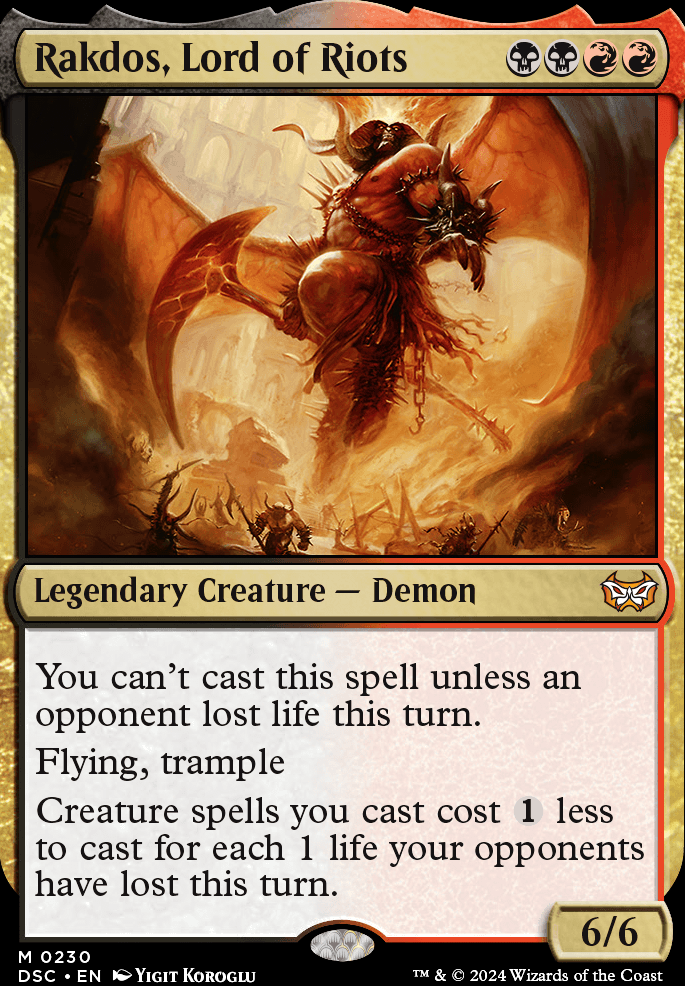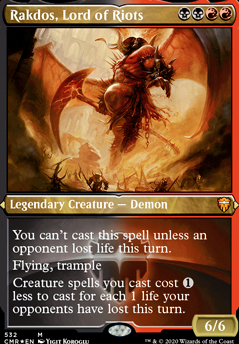The following ten parameters have been used to determine the strength of the deck. For each, a score of 5 (very good), 4 (good), 3 (mediocre), 2 (bad) or 1 (very bad) has been allocated; when totalized this score represents the power rating of the deck (maximum score is 50 points).
- Mana: indicates the availability of mana sources within the deck.
- Ramp: indicates the speed at which mana sources within the deck can be made available.
- Card Advantage: indicates availability of filter- and draw resources represented within the deck.
- Overall speed: indicates the deck’s potential for pace, based on resource availability and mana curve.
- Combo: indicates the measure of combo-orientation of the deck.
- Army: indicates the deck’s creature-army strength.
- Commander: indicates how much the deck is commander-oriented/dependent (less dependency is better).
- Interaction: indicates how much this deck can mess with opponents’ board states and turn-phases.
- Resilience: indicates whether the deck can prevent and take punches.
- Spellpower: indicates the availability and strength of high-impact spells.
Mana: 4
Obviously, the main source of mana is Mister Rakdos himself, but he can’t be summoned immediately so we need some other sources of energy to get him going. For this reason, the deck contains eight mana rocks, an enchantment that generates treasure tokens (in exchange for damage) and a second creature that generates mana based on opponents receiving damage.
Ramp: 1
Alas, not a single card in this deck ought to be considered as meant for ramping purposes.
Card Advantage: 4
This deck features various ways in which it can provide more casting options for myself. These can be divided into the following categories: direct draw (five non-permanents, two permanents), tutors (four options, two of which can be repeated), stealing (two cards), top-decking (two cards) and scrying (one card).
Overall speed: 3
Record of play shows that this deck can summon Rakdos, Lord of Riots as early as turn two (with a lucky draw), but on average he’s out by turn three or four. From this point forward, the deck has serious potential to gain momentum fast; both due to excellent access to resources as well as a decent average CMC (3,73 with all cards included; note that this average is brought up quite a bit because of the seventeen cards in this deck with CMC equal to/higher than 5 (the remaining 47 cards have average CMC 2,2)).
Combo: 3
A few pieces in this deck are actually insanely awesome at putting together some killer-combos; a number of them even feature its fiery commander. There’s enough draw- and tutoring in here to make it quite likely to pull one off. Possibilities include instant death (through the doubling of certain damage capabilities), infinite treasure tokens, infinite draw, infinite destruction of opposing permanents and infinite life-gain.
Army: 5
This deck’s main source of power. Nineteen of its creatures are what one should consider battle-cruisers. Aside from their pure combat strength, most of these behemoths excel at creature-(or other permanent) removal. Other excellent utilities they bring include draw, inhibition, recursion and tutoring. The remaining thirteen creatures are mostly utilitarian, providing energy, card-advantage and damage-enhancement.
Commander: 2
There’s a few ways for this deck to get mana available in solid enough amounts, that allows for the regular deployment of its battlecruisers. This energy becomes available a lot faster to the deck however, when its demon lord and savior is available to generate mana based on opposing pain. So, for the most part, not having him available decreases the deck’s speed substantially.
Interaction: 3
The main form of interaction with opposing board-states, comes in the form of resources included to destroy opposing permanents. More than half of these are permanent sources that can repeatedly use their destructive powers. The deck also includes a few options to steal, inhibit and counter opposing spells.
Resilience: 4
An aspect this deck is quite good at! Its wielder is a bit more resilient due to the deck’s life-gain potential (six options in total). Then there’s options included to keep Rakdos from harm (three options) and options to recur lost permanents from the graveyard (six options).
Spellpower: 5
Though this deck only has a few non-permanent spells on hand to whack the opposition with, it DOES have a vast number of ways in which it can deal copious amounts of non-combat damage to all opponents (seventeen options in total!).
Total power score: 34
Quite the powerhouse! In most cases, key to victory lies in the survival (and application) of Rakdos, Lord of Riots though. It’s basically over if he’s allowed to last for more than a few turns. Even without him though, this deck’s army is hard to surpass in terms of destructive capability and damage capacity. The deck’s resources are plentiful and cheap-to-cast, and it can really come out swinging fast if it’s given even a bit of leeway.



